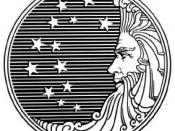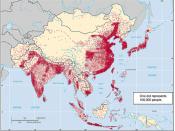Marketing Management
Table of Contents
2Situation �
3Problem Statement �
4Analysis of Alternatives �
6Decision �
7Evaluation �
7Bibliography �
�
Situation
Procter and Gamble is a famous manufacturer of consumer and household products which has operations in U.S. cities and 24 foreign countries. In fact, they ranked 14th in the Fortune 500 and 42nd among industrial companies worldwide. In 1987, they had US$17 billion in revenues and US$786 million net earnings. Commitment to develop and market products that can satisfy consumer needs is said to be the critical factor to their success.
Subsidiary operations of Australia, New Zealand, India, Pakistan, Philippines, Indonesia, Taiwan, Japan, Thailand, Singapore and Malaysia are all managed by P&G's Asia-Pacific Regional Headquarters in Hongkong. P&G-Asia's major brands include Pampers, Always, Head and Shoulders, Rejoice, Oil of Ulan, Clearasil, Camay, Zest and Vicks.
One of the P&G subsidiaries in Asia is in Singapore. P&G-Singapore which has 70 staff is headed by a managing director which is also responsible for Malaysian operations.
Feminine pads/napkins are one of the products that are being produced by P&G. Always, a brand of feminine pad that was introduced in three lead markets (i.e. U.S., Saudi Arabia & Singapore) in 1983 was an initial success. When introduced in Japan, P&G was blocked from using Always because of trademark reasons. Because of this, the name Whisper was used instead and luckily it was successful.
In 1988, competition in the feminine pad market is composed of three major competitors: Kimberly Clark's Kotex (35% market share) , P&G's Always (25%) and Kau Laurier (20%). Eight other brands competed for the remaining market share.
P&G was the largest market spender in 1989 where it outspent Kotex and Kao five and four times respectively. They spent two thirds of their media budgets in television, one third...


